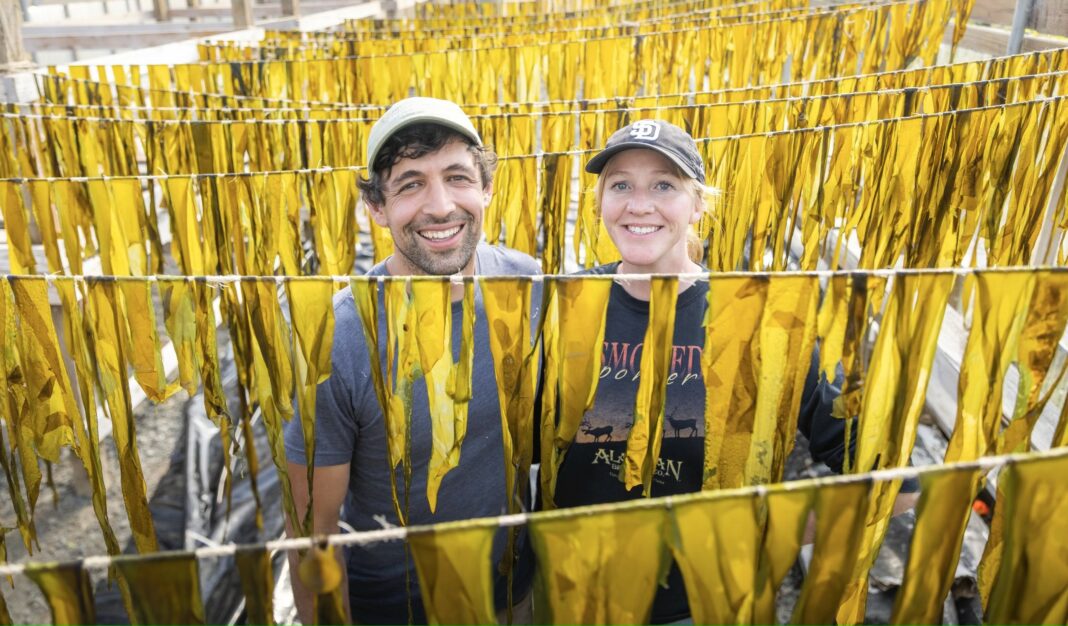From San Diego to Humboldt County, the Sunken Seaweed aquaculture company is growing like a weed.
Leslie Booher met her husband and business partner Torre Polizzi while studying marine biology at Humboldt State University. Together, they witnessed the near-total collapse of the kelp forest in Humboldt Bay, and wondered what they could do about it. They knew seaweed could be farmed for habitat restoration, food, animal feed, fertilizer, and to clean up the aquatic environment (bioremediation).
We’re advancing seaweed aquaculture for the whole industry, not just ourselves,” says Sunken Seaweed's Leslie Booher. “If it starts and ends with our company, that’s not successful.”
Their big break came in 2016, when they heard about the Port of San Diego’s Blue Economy Incubator, a program where the Port supports small “blue tech” businesses. Leslie and Torre (a North County native) put together a proposal, and Leslie recalls, “We pitched it in a Shark Tank–style presentation” to a group of Port officials. They were awarded a $137,000 grant to research what types of native seaweed could be grown, and what the market for those species could be. The Port spotted their company, Sunken Seaweed, a quarter-acre plot off the Grape Street pier, and even helped them with permitting for the farm, an often costly and lengthy process. “The Port removed these massive barriers to entry,” says Leslie.
Over the next five years, Leslie and Torre used this research plot to help answer dozens of questions about the life cycles, growth rates, and benefits of different species with a focus on helping the entire nascent seaweed field. “We’re advancing seaweed aquaculture for the whole industry, not just ourselves,” says Leslie. “If it starts and ends with our company, that’s not successful.”
In 2022, they went from research to market by partnering with Hog Island Oyster Company in Humboldt Bay. There, Sunken Seaweed has built a facility on land to grow two types of edible seaweed, dulse and sea lettuce, using seawater pumped into 1,200-gallon tanks. And in the bay, they grow bull kelp. Co-located with oysters, the kelp buffers the pH of the acidifying ocean water and provides oxygen that helps the shellfish. The farm has produced about 7,000 pounds of edible seaweed already this year, and next year they expect to harvest 20,000 pounds of bull kelp alone. They sell their seaweed at farmers markets and to restaurants in the Humboldt area, and to businesses here in San Diego, like Tunaville Market and Groceries and the restaurant Juniper and Ivy.
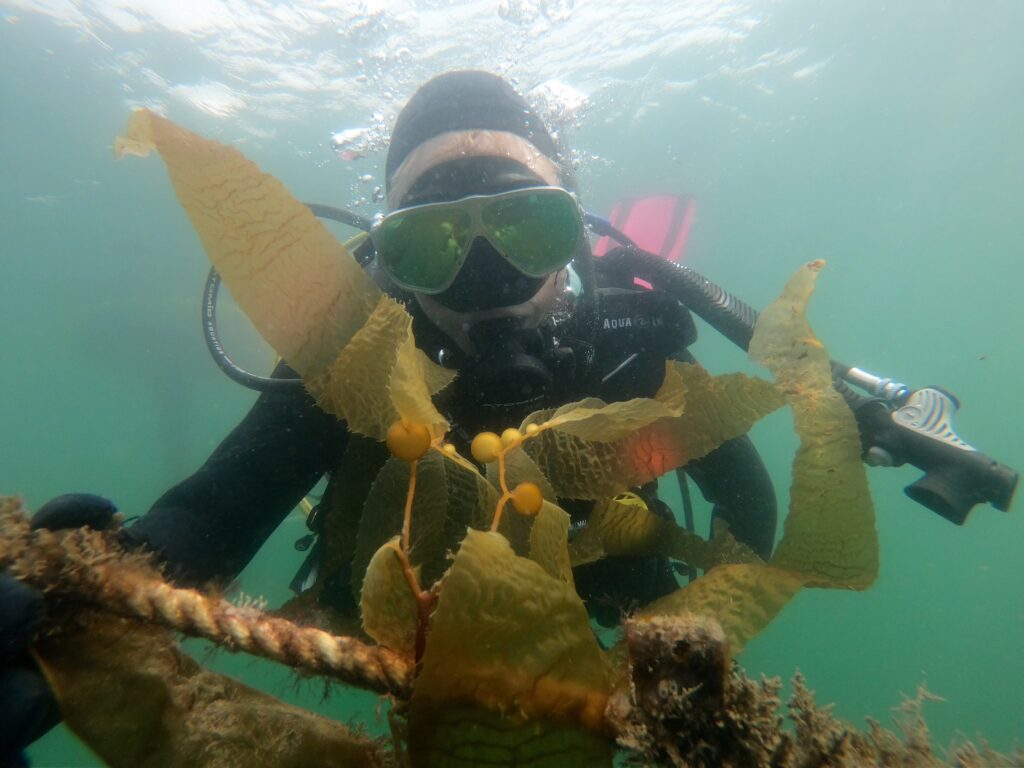
– Courtesy of Sunken Seaweed
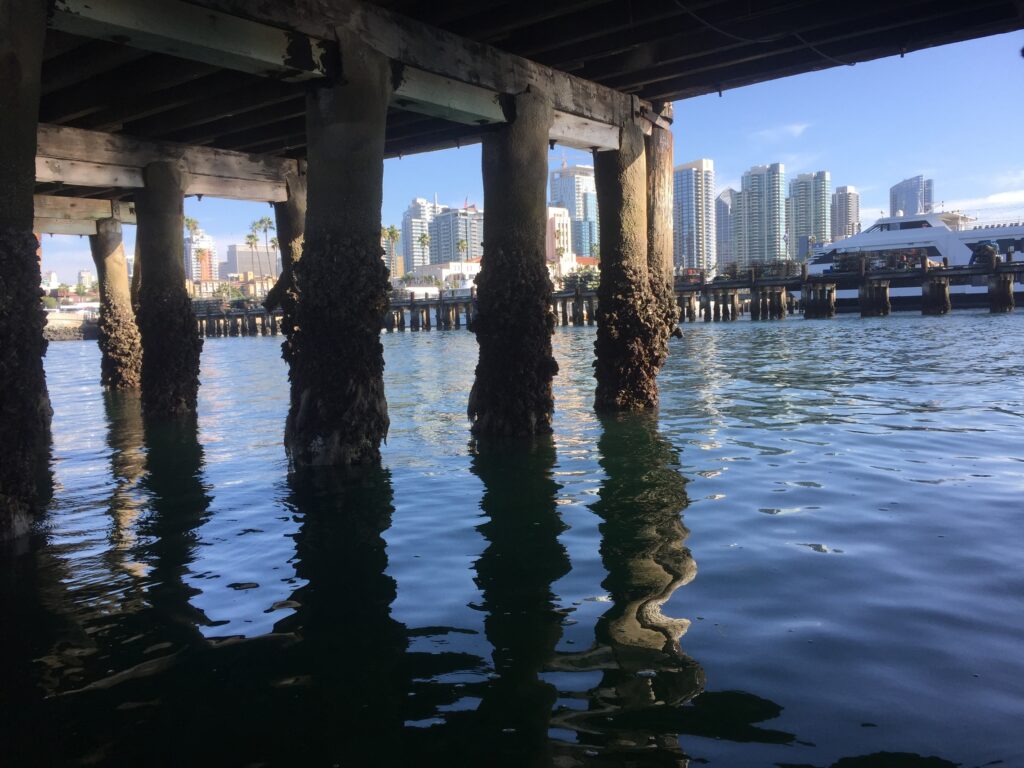
– Courtesy of Sunken Seaweed
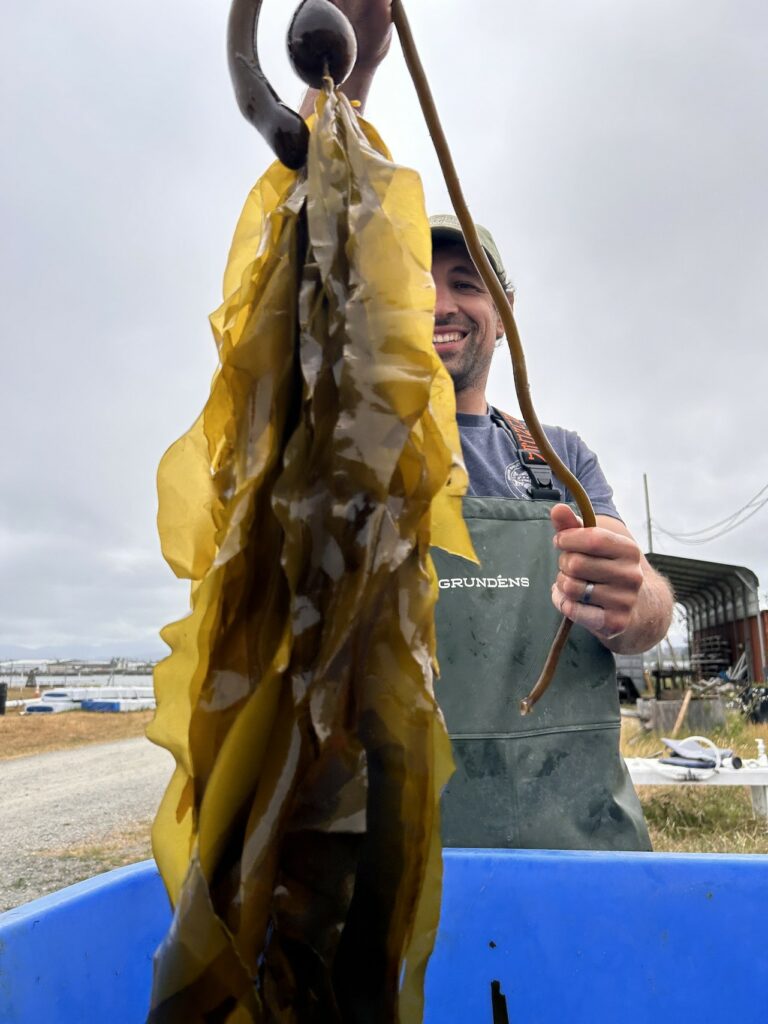
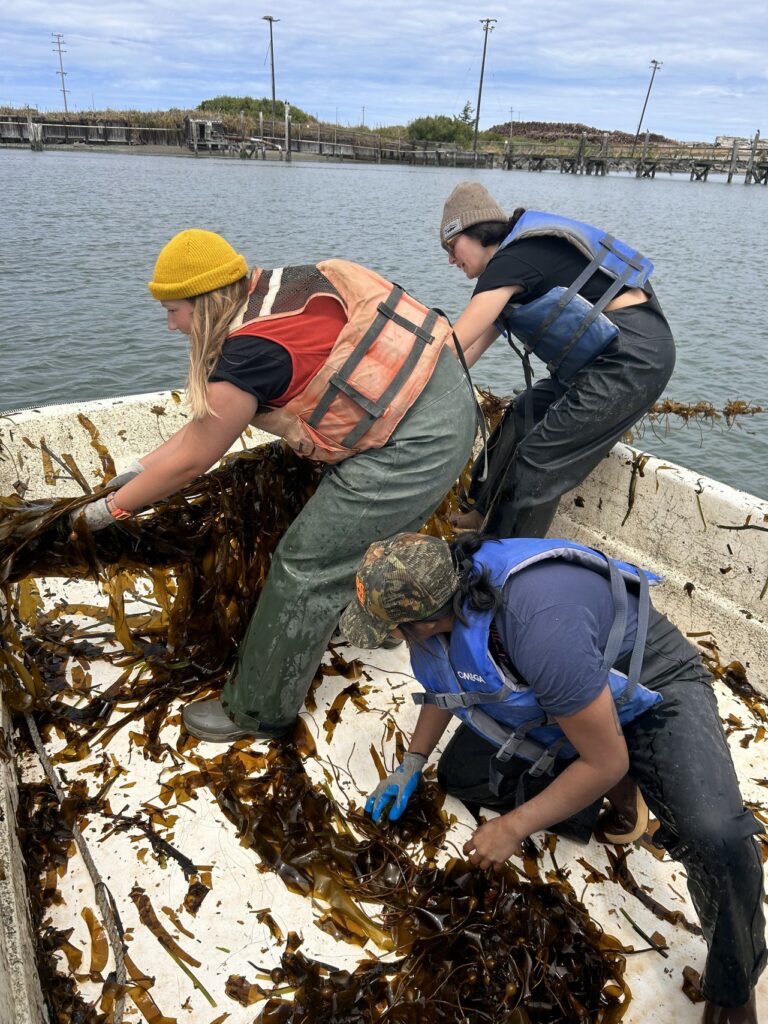
Sunken Seaweed remains “very much dedicated to San Diego,” says Leslie, with so many aspects of seaweed aquaculture still to investigate. They’ve teamed up with Dr. Matt Edwards of SDSU’s Kelp Ecology Lab to conduct high-level scientific research in addition to market-focused work. And along with funding from the Port, they’ve received grants from NOAA Fisheries, the Hubbs SeaWorld Research Institute, and one from the U.S. Department of Energy to investigate how a species of sea lettuce can sequester nutrients from urban runoff and then be used as fertilizer.
Food production in San Diego Bay may be less feasible, as decades of industrial use have left the Bay’s waters less than pristine. “Not everything that grows there you’d want to eat,” says Leslie. “Some heavy stuff has gone on in that bay,” and pollutants are easily taken up by seaweed species. This could make farmed seaweed valuable for bio-remediation or providing valuable ecosystem services.
In that vein, food production in San Diego Bay may be less feasible, as decades of industrial use have left those waters less than pristine. “Not everything that grows there you’d want to eat,” says Leslie. “Some heavy stuff has gone on in that bay,” and pollutants are easily taken up by seaweed species. This could make farmed seaweed valuable for bio-remediation or providing valuable ecosystem services. Sunken Seaweed has even explored using seaweed as an art material.
If the applications for seaweed seem endless, that’s because it seems they are. It’s used in food, nutritional supplements, and cosmetics, as fertilizer and fuel. It can be used to reduce methane emissions from livestock when added to their feed. It has pharmaceutical and medical applications. It can be made into fabrics, bioplastics, and even into building materials.
But Sunken Seaweed is focused on food products, creating tasty, highly nutritious produce without any irrigation or fertilizers, without taking up much space on land or sea, and potentially benefiting the aquatic environment. The World Bank issued a report this year stating: “Seaweed farming can help support a world free of poverty on a livable planet. With its ability to sink carbon, sustain marine biodiversity, employ women, and unlock value chains, seaweed farming demonstrates how development, climate, and nature work together to generate value and uplift communities.” They estimated the potential worldwide market at nearly $12 billion by 2030. The current market is almost totally dominated by Asia, but the potential is global. Sunken Seaweed hopes to help create a part of that future, right here in California.


